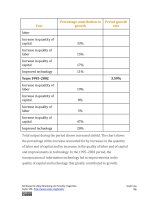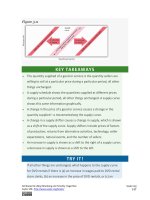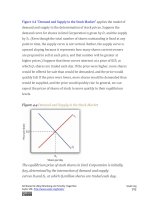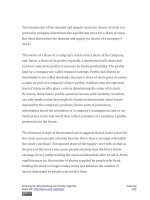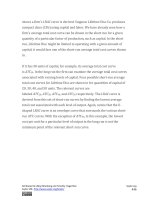Authors libby rittenberg 768
Bạn đang xem bản rút gọn của tài liệu. Xem và tải ngay bản đầy đủ của tài liệu tại đây (416.79 KB, 1 trang )
In the case of bilateral monopoly, the amount of labor employed is
restricted by the monopsony firm to a quantity that falls short of the
efficient level. In effect, the efficiency damage has already been done. The
labor union seeks merely to offset the monopsony firm’s ability to restrict
the wage.
Are unions successful in their primary goal of increasing wages? An
examination of the impact on wages paid by firms that faced organizing
drives by unions between 1984 and 1999 found virtually no change in
wages attributable to union organizing efforts. The study examined firms
in which unions had either barely won or had barely lost the election. It
found that unions that had eked out victories had gone on to organize
workers but had had no significant impact on wages or on
productivity. [1]Other evidence, however, suggests that unions do tend to
raise wages for their members. Controlling for other factors that affect
wages, over the period 1973 to 2002, unions appear to have increased
wages by about 17% on average. [2] Part of the explanation of this finding is
that unions have had the most success in organizing in the public sector,
where union pressure for higher wages is most likely to be successful.
Other Suppliers and Monopoly Power
Just as workers can unionize to gain a degree of monopoly power in the
marketplace, so other suppliers can organize with a similar goal. Two of
the most important types of organizations aimed at garnering market
power are professional associations and producers’ cooperatives.
Professional Associations
Attributed to Libby Rittenberg and Timothy Tregarthen
Saylor URL: />
Saylor.org
768
